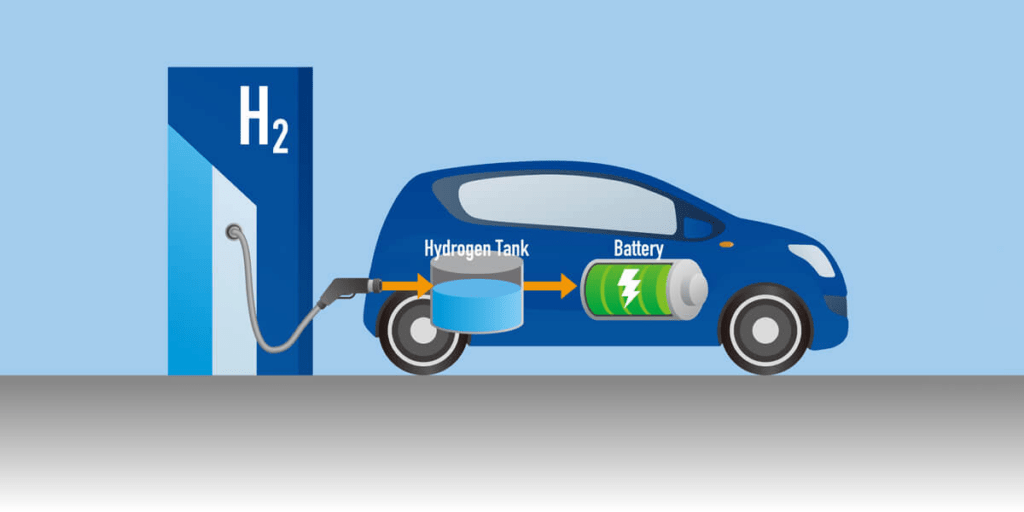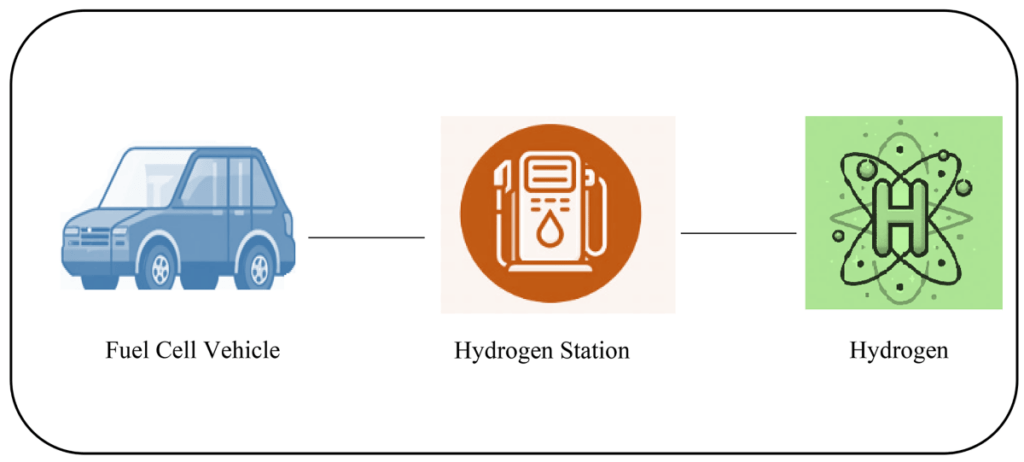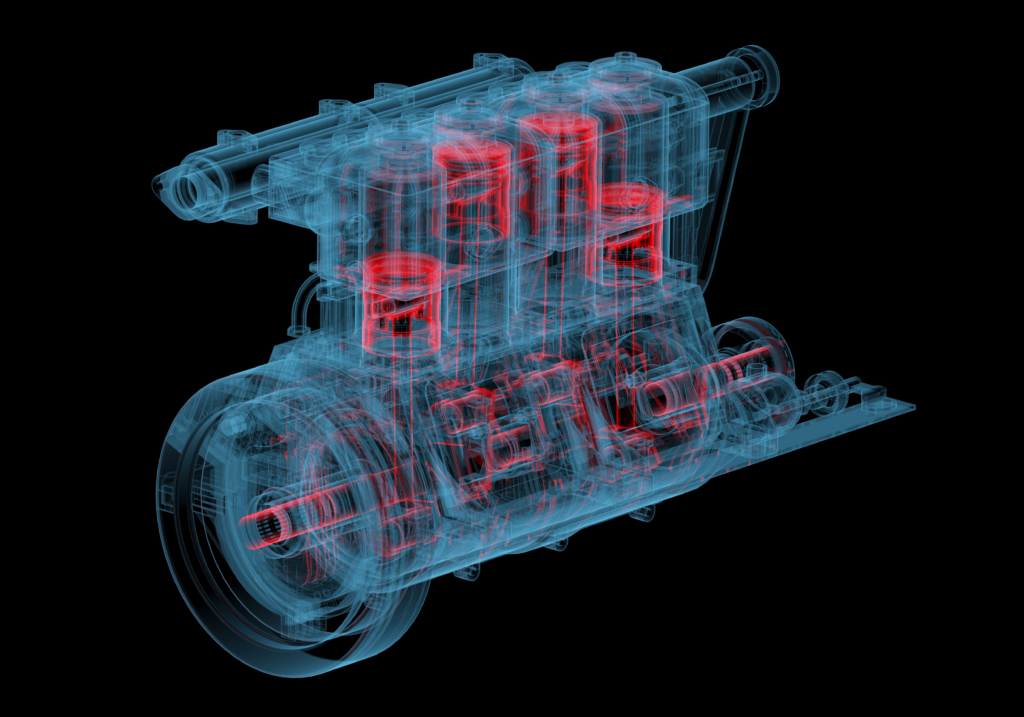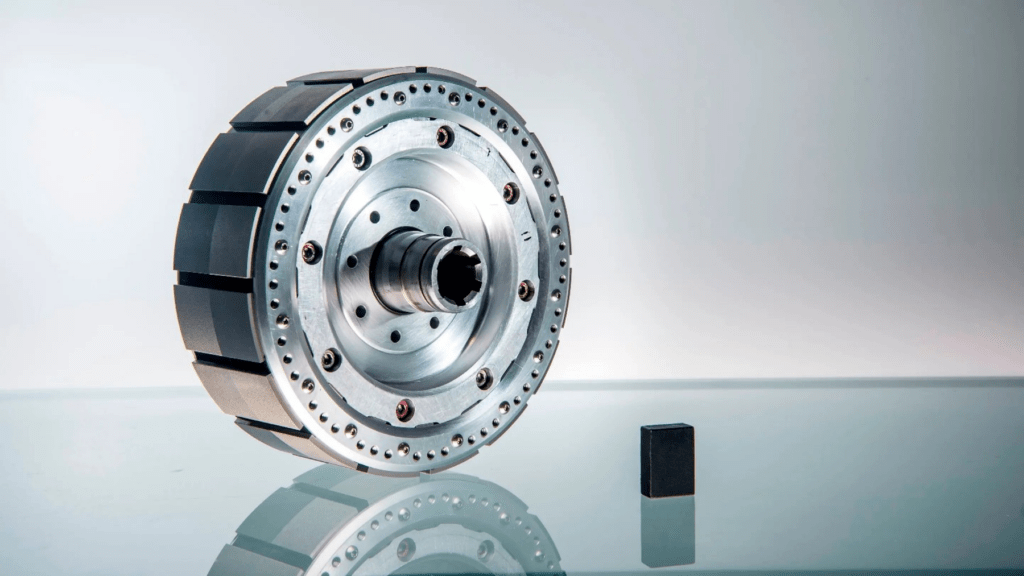The race towards sustainable transportation has been in full swing for decades. In this pursuit, two main contenders have emerged: hydrogen engines and electric motors. While both offer alternatives to fossil fuels, electric motors have gained a significant lead over hydrogen in recent years. This article delves into why hydrogen engines have struggled to keep pace and why electric motors have rapidly become the frontrunners for zero-emission transportation.

Ecological Challenges and Solutions
Challenges
Climate Change
Transportation remains one of the largest contributors to greenhouse gas (GHG) emissions, responsible for approximately 25% of global CO₂ emissions. These emissions trap heat in the atmosphere, accelerating global warming and causing significant environmental damage. Internal combustion engines (ICEs) that run on fossil fuels, such as gasoline and diesel, produce harmful emissions, including carbon dioxide (CO₂), methane (CH₄), and nitrogen oxides (NOₓ). The transportation sector must pivot to cleaner alternatives if we are to meet international climate goals, such as the Paris Agreement, which aims to limit global warming to 1.5°C above pre-industrial levels.
Fossil Fuel Dependence
The current transportation infrastructure is built around fossil fuel consumption. This dependence is unsustainable for several reasons. First, fossil fuels are a finite resource, and their extraction, refining, and consumption release harmful pollutants into the environment. Additionally, geopolitical tensions often arise around the control and supply of these resources, contributing to global instability. The reliance on fossil fuels not only accelerates climate change but also limits economic and environmental resilience.
Solutions
Zero-Emission Vehicles (ZEVs)
The solution to reducing transportation emissions lies in the transition to zero-emission vehicles (ZEVs). These vehicles do not produce tailpipe emissions, drastically lowering GHGs compared to traditional ICE vehicles. ZEVs come in two main forms:
- Electric Vehicles (EVs): Powered by electric motors and batteries, EVs produce no direct emissions, provided the electricity used to charge them comes from renewable sources.
- Hydrogen Fuel Cell Vehicles (FCVs): Hydrogen-powered cars use hydrogen gas to produce electricity through fuel cells, emitting only water vapor in the process.
While both technologies offer zero tailpipe emissions, electric vehicles have become the dominant player due to a range of factors, which we’ll explore in this article.
Renewable Energy Sources
For ZEVs to truly be environmentally beneficial, the energy used to power them must come from renewable sources such as solar, wind, and hydropower. Currently, EVs have the advantage in this regard, as charging networks increasingly integrate renewables into their grids. In contrast, much of the hydrogen produced today comes from fossil fuels, which greatly diminishes its environmental benefits.

Why Hydrogen Engines Lost Ground
Despite being hailed as a promising alternative to fossil fuels, hydrogen engines have struggled to gain traction. Hydrogen fuel cell technology, though theoretically efficient, faces several hurdles that have limited its adoption and development. Here’s why hydrogen has fallen short:
Energy Inefficiency
Hydrogen fuel cell vehicles are, by nature, energy inefficient. Hydrogen itself must be produced, stored, transported, and then converted back into electricity in the vehicle’s fuel cell. This process wastes a significant amount of energy, especially when compared to electric motors, which store energy directly in batteries. Hydrogen is often produced through a method known as steam methane reforming (SMR), which uses fossil fuels like natural gas to extract hydrogen, a process that still generates CO₂, known as grey hydrogen. This makes the overall environmental benefit of hydrogen vehicles questionable, especially when renewable electricity could be used more efficiently in battery-electric vehicles.
Additionally, the conversion process—turning electricity into hydrogen and then back into electricity—results in a loss of up to 30% of the energy, compared to the approximately 10-15% loss in electric vehicles. This inefficiency has made hydrogen fuel cells less attractive for mass deployment.
Infrastructure Limitations
One of the largest obstacles to the widespread adoption of hydrogen vehicles is the lack of infrastructure. Building hydrogen refueling stations is both complex and expensive, and there are very few of them compared to the fast-growing network of electric vehicle charging stations. As of now, hydrogen refueling infrastructure is concentrated in a few regions, mostly in California and parts of Japan and Germany, making long-distance travel in hydrogen-powered vehicles impractical.
EV charging infrastructure, on the other hand, has expanded rapidly. Major players such as Tesla, ChargePoint, and Electrify America have made significant investments in charging networks, allowing EV drivers to charge their vehicles conveniently at home, work, or on the road. The growing ubiquity of EV charging stations has made electric vehicles far more practical for everyday use.
High Costs
Hydrogen is notoriously expensive to produce, store, and transport. According to industry estimates, producing hydrogen fuel currently costs between $4 to $6 per kilogram, which is far higher than the cost of electricity used to charge electric vehicles. Additionally, hydrogen vehicles themselves are more expensive to manufacture due to the complexity of fuel cell systems and the need for specialized storage tanks. As a result, hydrogen vehicles remain out of reach for many consumers, while the cost of electric vehicles continues to drop due to advances in battery technology and economies of scale.
Complex Storage and Safety Concerns
Hydrogen is a highly volatile gas that must be stored at extremely high pressures (up to 10,000 psi) in order to be practical for vehicle use. This makes both the production and storage of hydrogen more complicated than charging an EV, which simply requires plugging into the grid. Furthermore, hydrogen’s volatility raises concerns about safety, especially in the event of an accident or leak. These factors have made hydrogen less attractive to consumers, who view EVs as safer and more reliable.
The Rise of Electric Motors
While hydrogen has struggled to find its place, electric motors have surged ahead, driven by rapid technological advancements and growing consumer demand. Electric vehicles (EVs) have been at the forefront of the clean energy revolution, and their dominance over hydrogen technology can be attributed to several factors:
Rapid Development of Battery Technology
In recent years, battery technology has advanced at a breakneck pace. Lithium-ion batteries, which power most electric vehicles, have become more energy-dense, longer-lasting, and cheaper to produce. For example, Tesla’s new 4680 battery cells offer greater energy capacity and a lower cost per kilowatt-hour (kWh), making electric vehicles more affordable and capable of traveling greater distances on a single charge. Other innovations, such as solid-state batteries, promise even more significant improvements in range and charging speed.
These advancements in battery technology have made electric vehicles more practical for consumers. The latest EV models can travel over 300 miles on a single charge, a range that is competitive with gasoline-powered vehicles.

Improved Range and Performance
Electric motors offer higher efficiency and power density than hydrogen fuel cells. Motors such as Equipmake’s HTM-3500, which powers electric buses, offer outstanding torque and acceleration while maintaining energy efficiency. This performance is not just theoretical—modern EVs, including models from Tesla, Rivian, and Lucid Motors, are capable of outperforming their gasoline-powered counterparts in terms of speed, acceleration, and handling.
The range and performance of electric vehicles have steadily improved over the last decade, reducing range anxiety for consumers and making EVs a viable option for long-distance travel.
Existing Infrastructure and Convenience
The rapid growth of the EV charging infrastructure has played a crucial role in the success of electric motors over hydrogen. In addition to public charging stations, EV owners can charge their vehicles at home using standard wall outlets or faster Level 2 chargers. In contrast, hydrogen vehicles can only be refueled at specialized hydrogen stations, which are limited in number and often located far from urban centers.
Moreover, advancements in fast-charging technology have made it possible for EVs to gain a significant charge in a matter of minutes. Companies like Ionity and Electrify America have installed ultra-fast chargers that can charge compatible EVs from 0% to 80% in just 20-30 minutes.

The Future of Transportation
As we look to the future of transportation, it’s clear that electric motors have positioned themselves as the leading technology for zero-emission vehicles. Several key trends are shaping the evolution of the transportation industry:
Electric Vehicles Take Center Stage
With battery technology advancing rapidly and the cost of electric vehicles continuing to fall, EVs are poised to dominate the transportation market in the coming decades. Governments worldwide are accelerating this shift by introducing stringent emissions regulations and offering incentives for the purchase of electric vehicles. For instance, countries like Norway and Germany have set ambitious targets to phase out gasoline and diesel vehicles entirely by the 2030s.
Continued Innovation
Companies like Equipmake, Tesla, and Rivian are pushing the boundaries of what electric motors can achieve. The next generation of electric vehicles will likely feature solid-state batteries, wireless charging, and even autonomous driving capabilities. These advancements will make EVs even more efficient, convenient, and accessible to a broader range of consumers.
Hydrogen’s Uncertain Future
While hydrogen technology is not entirely out of the picture, it faces significant challenges that will be difficult to overcome. The cost and complexity of hydrogen production, storage, and distribution remain major obstacles. Furthermore, hydrogen’s energy inefficiency and lack of infrastructure make it less competitive than electric motors. While hydrogen may find a niche in sectors like heavy-duty transportation and industrial industries such as shipping or aviation, electric motors are likely to be the mainstay for passenger and commercial transportation for decades to come. Even heavy-duty vehicles that once looked to hydrogen as a solution, such as trucks and buses, are seeing a shift toward battery-electric technology. Companies like Daimler and Volvo are investing heavily in electric trucks, with hydrogen taking a backseat due to the high costs and logistical hurdles associated with its widespread use.
In Short
While hydrogen engines once held promise as a clean alternative to fossil fuel-powered transportation, they have been overtaken by the rapid advancements in electric motor technology. The efficiency, affordability, and practicality of electric vehicles have made them the leading choice for zero-emission transportation, leaving hydrogen to struggle with its inherent inefficiencies and lack of infrastructure. The global push towards renewable energy and sustainable transportation further cements the dominance of electric motors, which are supported by an ever-growing network of charging stations and continual innovations in battery technology.
Looking ahead, it’s clear that electric vehicles, powered by highly efficient electric motors, will continue to lead the charge in the fight against climate change. While hydrogen may find limited use in specific industries, it will likely remain a secondary player in the quest for sustainable, zero-emission transportation. As electric vehicles become more efficient, affordable, and accessible, they represent our best hope for reducing transportation-related emissions and achieving a cleaner, more sustainable future.
Related Content
- The World’s First Hydrogen Tram Service Suspended in Foshan, China
- Blue Hydrogen: A Green Dream or Ecological Nightmare?
- A Green Step Forward: Swiss Researchers Advance Hydrogen Storage
- Hydrogen Flight Looks Ready for Take-Off with New Advances
- Fast-Tracking the Guarantee of Origin Scheme for Green Hydrogen and Renewable Electricity
- Artificial tree’ from Switzerland to produce green hydrogen
- The hydrogen engine was going to be the future
- Why do manufacturers of cars focus on electric motors
- Will green hydrogen replace electric vehicle technology?

